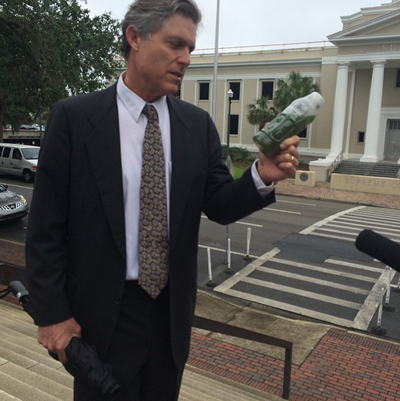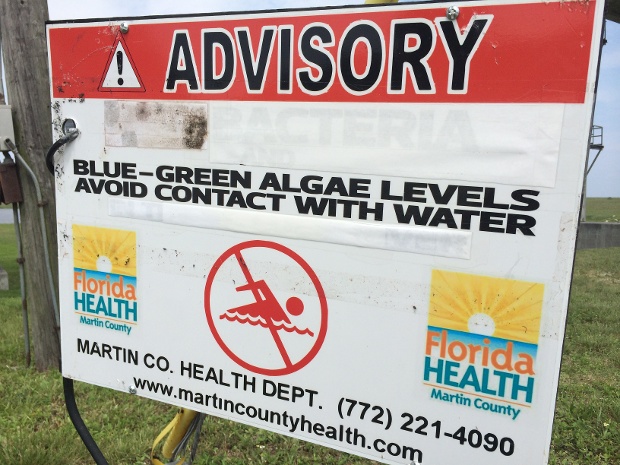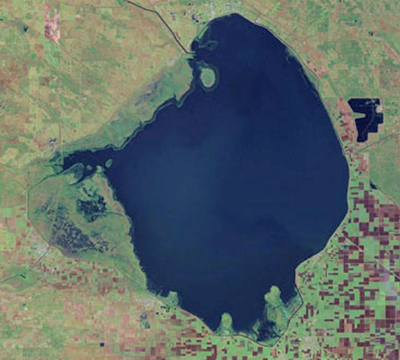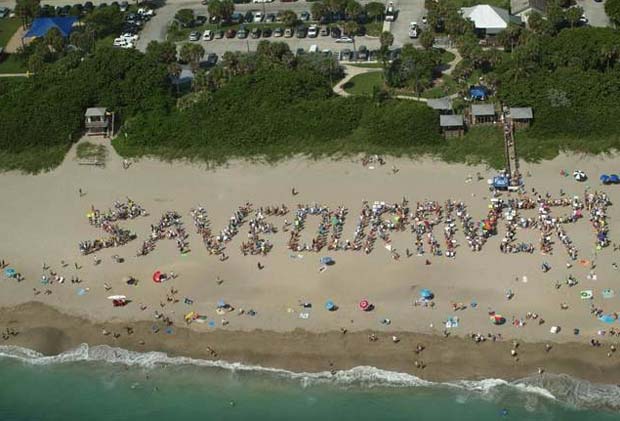Amendment 1, Florida’s funded opportunity to ‘finally’ put a major fix on Lake Okeechobee and the Everglades, is in jeopardy. The voters voted for buying sugar land to move treated water south into the Everglades. But Banana Republic tilting state legislators plan to use set-aside funds for their own pork – a blatant in-your-face screw the voters move.
[dropcap]F[/dropcap]orida environmental projects related to the Everglades, currently delayed, planned or underway, have been circling the wagons for decades, and don’t deal with the real issue; acquiring sugar-land for the purpose of sending Lake Okeechobee’s overflow water south (not east and west) to be treated and then sent into the Everglades. Without that being put into place, restoration of the Everglades via the Comprehensive Everglades Restoration Plan (CERP) is a completely hopeless situation. There will be no salvation for the once pristine St. Lucie and Caloosahatchee rivers until water from Lake “O” travels its natural course south into the Everglades.

Eric Draper, executive director of Audubon Florida, holds up a bottle of water collected Monday from the St. Lucie River, where he said a blue-green algae bloom was caused by excessive amounts of nutrients from agricultural runoff and human waste. Members of the Everglades Trust delivered the bottles with 20,000 petition signatures to members of the Florida Legislature and Gov. Rick Scott on Tuesday to highlight the consequences of not using Amendment 1 funds to purchase lands owned by U.S. Sugar south of Lake Okeechobee to protect the Everglades and drinking water sources. Draper spoke to reporters Tuesday outside the Capitol. Audubon and dozens of other groups, including sport fishers and commercial fishermen protested lawmakers misuse of funds. Image multiple sources.
Voters speak up loud and clear. Florida’s politicians respond with “Argo yourself”
Amendment 1 was supported by more that 75% of Florida’s voters in last November’s general election. Amendment 1 changed the constitution to achieve sugar-land buy. However, state law makers read the voters saying “do this” to mean “we do what we want,” setting aside pork for themselves: salaries, other agency supports, state parks, habitat improvements and any junk expenditures that helps them out, personally.
In an interview last week Terry Gibson, avid angler, conservationist and owner of North Swell Media said this about Amendment 1: “The Florida Legislature has willfully ignored the intent of the 75% percent of voters that approved Amendment 1. They’re using that money to buy paperclips for the DEP instead of purchasing lands that are important to conserve and to fix our water quality problems.”
Back to business as usual
This doing nothing about the elephant in the room will eventually totally destroy the scenic St. Lucie and Caloosahatchee rivers’ fisheries, permanently and severely damage homeowner values, marginalize the Atlantic and Gulf waters’ nearshore fisheries and end, in its eventuality, the historic east coast mullet run.
Tourism has already been negatively effected.
Green Slim Crime
Capt. Mike Connor, a Stuart, Florida resident and professional fishing guide, is lead spokesperson for River Coalition, a grass roots organization with a mission to fight for a safe, healthy and ecologically balanced St. Lucie River Estuary and Indian River Lagoon.

This picture is worth a thousand words. A River Coalition image of sign warning of life threatening toxicity in the St. Lucie River.
In an interview last Friday (May 1), Mike told us about a looming repeat environmental catastrophe. It started for him last Tuesday when he got a call from a friend and fellow conservationist, Kenny Hinkle. Hinkle reported green slim up against the east water control gate in Lake Okeechobee. A significant water release into the St. Lucie by the Corps of Engineers (COE) was scheduled for Wednesday. Some green slime water had been released, which you’ll see in the video.
Mike hustled up there to find as reported, green slime in Lake O. On Wednesday the green slime multiplied and on Thursday Mike said: “There was green as far as the eye could see. It didn’t look like algae. It looked like green paint, like perfect green out of a can.”
At that point, the COE had stopped the discharge because of a video taken by Kenny Hinkle (narrated by Connor) called “Slime Crime.” It went viral – influencing even the governors office in Tallahassee, Florida.
In other words, tough shit
Mike said the COE lab reports on the green slime came back positive for toxicity, but that COE was going to release the slime into the St. Lucie on Friday anyway, stating, in effect: The water levels in the lake are dangerously high (17-feet), and we own and manage the lake’s dike, spillways and discharge equipment and have veto power over the state authorities. We are the feds.
Mike went on to explain that 20 years ago, attempts to put a halt to the agri-business folks dumping their heavily nutrient rich phosphorus water, pesticide residue and animal excrement into the lake via tethered canals was politically met. The agriculture folks were told by the state legislature: Clean up by using Best Management Practices (BMP). Mike said: “You can see where that toothless demand has taken us.”
In 2013, Mike ferried a CBS national news network team around – showing them the destruction and havoc a similar Green Slime toxic pollution event had on the St. Lucie. The COE discharge that year devastated the estuary – killed everything living, blackened the Atlantic Ocean 12 miles out to sea and killed the famous mullet run on Florida’s Atlantic Ocean. CBS never ran the story.
Here’s Kenny Hinkle’s YouTube “Slime Crime” with Mike Connor as narrator.
[youtube id=”c7CglO2z33E” width=”620″ height=”360″]
The Lake Okeechobee background. How it happened

Then and now. The lake is gaining sediment because of containment.
Image from Lodge’s “The Everglades Handbook.”
Lake Okeechobee and its watershed lakes and wetlands historically stored vast amounts of water from rainfall, springs and small streams in the south-central Florida interior – south of preset day Orlando.
Most of the water was carried southward by the lake’s largest tributary, the Kissimmee River. During hydroperiods the lake spilled south into the Everglades via a water cleansing pond apple forest and Sawgrass. Annually, that added substantial waterflow to an already flooded ecosystem. With this function intact, Lake Okeechobee was the hydrologic hub of South Florida.
Today, that function has been enormously disturbed; curtailed by flood-control projects through the Kissimmee watershed, diversion of Lake Okeechobee’s waters, often ecologically damaging heavy flows to the east via the St. Lucie River (and its man-made canal that takes water to the Atlantic Ocean), and west via the Caloosahatchee River all the way to the Gulf of Mexico, as well as, altered flows to other coastal canal ecosystems.
In addition, containment of the lake by the Hoover Dike and water control has constrained the lake – unable to move outward in response to changing water levels.

The south end of the lake is surrounded by farms, and large swaths are prodigious polluters, like Big Sugar operations. We subsidize Big Sugar with ridiculous price supports. Their corporate welfare program is fail-safe profitable. SFWMD image.
Chemical Ali
Since about 1970, nutrient enrichment, mostly from agriculture, has changed the lake’s chemistry and threatened its biological functions. Nutrient enrichment was exacerbated by canalization of, and levees along, the Kissimmee River, and the Hoover Dike. These modifications had served to retain sediments in the river and lake rather than allowing them to exit and settle in the larger, natural wetlands and littoral zone (shoreline), including the northern Everglades.
It will never go away
The phosphorus load now embodied in the lake sediments (greatly re-expanded by the hurricanes of 2004 and 2005) may require centuries to assimilate, and unless loading of phosphorous from the watershed is substantially reduced, the internal recycling will never decline.
Scary
The ability to provide flood control and water supply without impairing the ecology of Lake Okeechobee and damaging the Caloosahatchee, St. Lucie, as well as other estuaries, is essentially hopeless without moving treated water south through the Everglades.
SOURCES: Florida Audubon, Jacksonville Times, River Coalition, Everglades Foundation, Palm Beach Post, Sun Sentinel, Thomas E. Lodge, Ph.D. (The Everglades Handbook, Third Edition).
[information] Mike is the former editor of this magazine and former editor of Florida Sportsman’s Shallow Water Angler magazine. Mike is an active member of Florida Outdoor Writers Association.Capt. Mike Connor’s website . . .
[/information]


